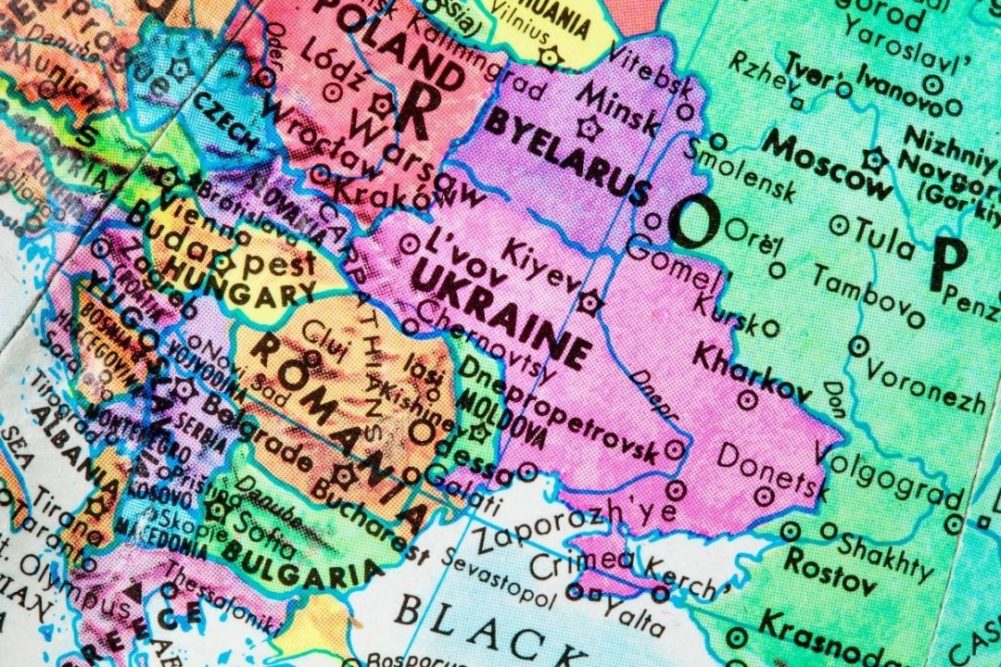KANSAS CITY, MO. — Many agricultural futures have soared to contract highs, with some trading to nine-year highs on Feb. 23, amid fears of market disruption as Russia invaded Ukraine.
Excluding the combined countries of the European Union, Russia is the world’s single largest wheat exporter and Ukraine is two notches lower just behind Australia. The United States comes in fourth after Ukraine. Combined, Russia and Ukraine are expected to account for nearly 30% of global wheat exports in 2021-22, according to data from the US Department of Agriculture.
Since dropping about 12¢ to 22¢ a bushel on Feb. 18 (ironically on indications of easing tensions between Russia and Ukraine), US March through December wheat futures as of Feb. 23 had surged more than $1 a bushel, or about 13%, in Kansas City contracts, from 90¢ to 99¢ a bushel, or about 12%, in Chicago, and about 50¢ to 60¢ a bushel, or about 6%, in Minneapolis. Prices were up even more from recent lows posted Feb. 3.
“Risk premium continues to get pumped into prices despite reports that there have been no disruptions to grain export movement in the region thus far,” said Brian Harris, executive director and owner of Global Risk Management, Tampa, Fla.
Ukraine is forecast to account for 16% of global corn exports in 2021-22, coming in after the United States (30%), Brazil (21%) and Argentina (19%). Since dropping sharply on Feb. 15, Chicago corn futures spot through September (old crop) 2022 had gained about 30¢ to 46¢ a bushel, or 5% to 7%, as of Feb. 23.
Possibly out of fear that the flow of export wheat from the Black Sea region (which includes Russia and Ukraine) and/or because of fear that soaring wheat prices may go even higher, the export tender lineup has been active. Among others, Egypt and Turkey posted large tenders this week, Jordan was in the market and Algeria made a huge purchase last week. Most wheat tenders in recent weeks have been filled by Black Sea region and/or eastern European wheat. But many in the trade think foreign buyers will have to turn at least in part to the United States should supplies from the Black Sea region be cut off.
Of course, there are other factors at work in the grain markets, mostly weather related with a dose of lingering COVID logistics snarls thrown in, although most pale compared with the acute impact of the Russia-Ukraine situation.
For wheat, dryness across the US Southern Plains is a growing concern, even though much of the crop still is dormant. As of late February, USDA good-to-excellent ratings for winter wheat mostly declined from a month earlier and were well below year-ago levels at 26% in Kansas (40% a year ago), 9% in Oklahoma (48%) and 10% in Texas (40%). The US Drought Monitor as of mid-February showed 72% of total winter wheat areas in drought, with the vast majority of that for hard red winter primarily grown in the Southern Plains.
Corn and soybean futures prices have been propped up by drought-reduced production in South America with the USDA ratcheting down production and export forecasts for both crops in its latest supply-and-demand report. Many think prospects, especially for soybeans in Brazil, need to go even lower than the USDA’s forecast.
The Russia-Ukraine crisis impact on the energy market has spillover effects on corn and soybean markets since about 35% of US corn production is used to produce ethanol and about 42% of US soybean oil production is targeted for the biodiesel and renewable diesel sectors. Brent crude oil prices topped $100 per barrel this week while West Texas Intermediate crude oil in the United States hovered in the low- to mid-$90 per barrel range, up more than 50% from year ago.
Further, Russia is the world’s largest exporter of nitrogen fertilizers, various forms of which have been in tight supply for months with prices at nosebleed levels. Fertilizer prices have moderated some as the winter progressed and supplies are a bit more available, but both still are far from pre-COVID levels. While Russia didn’t create the nitrogen fertilizer situation, it certainly has contributed to it, including recent news that it had halted exports.
The impact of Russia’s actions against Ukraine go well beyond the grain and energy markets, with the potential to add to global inflation that already was surging as the result of COVID, among other economic, social and political ramifications. And while Russia isn’t the economic juggernauts that the United States and China are, it is a significant supplier of certain critical commodities (wheat, crude oi, fertilizer to name a few). Couple that with the unpredictability of Russian President Vladimir Putin and there is a recipe for an outsized impact, disruption and huge volatility in the markets.



